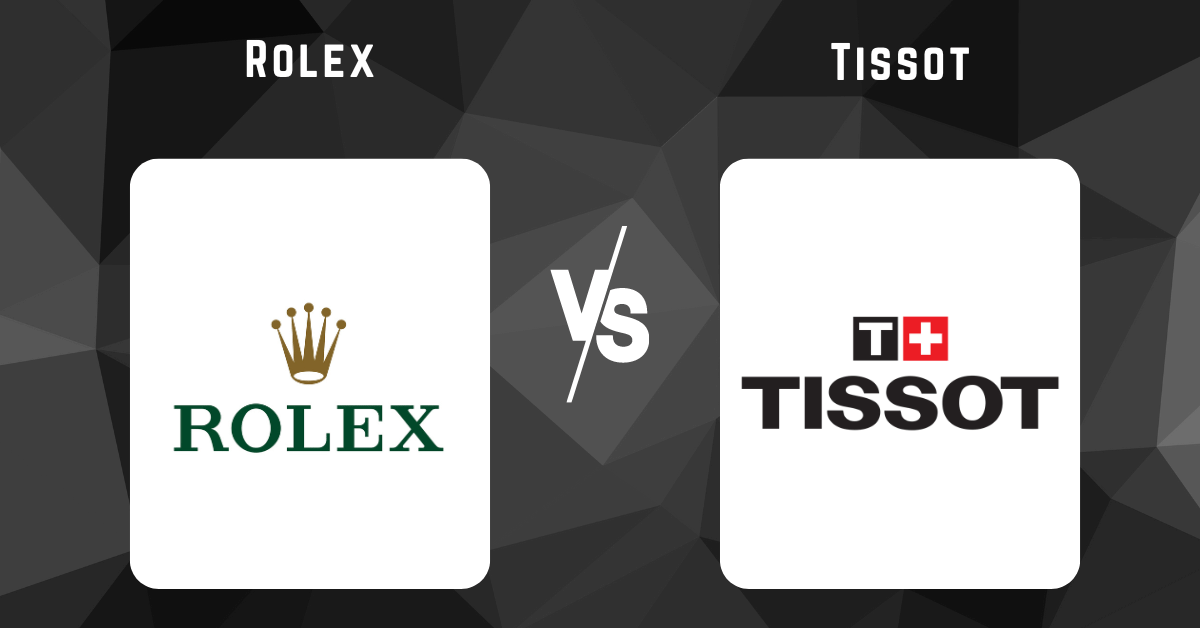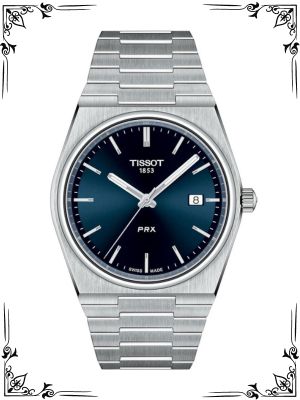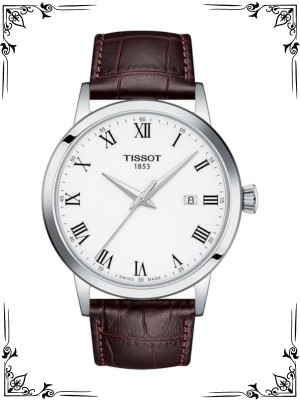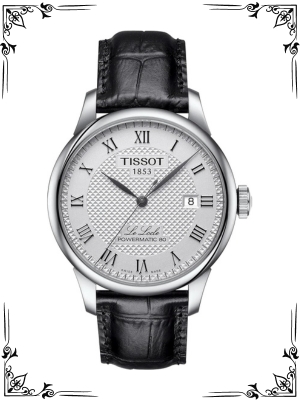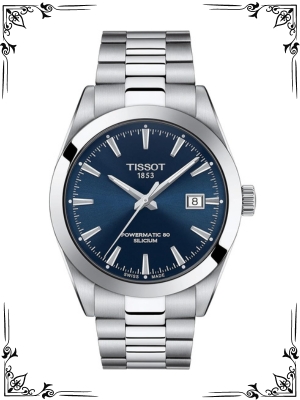Rolex: Exquisite craftsmanship, in-house movements, iconic designs, and higher price points. Tissot: Reliable Swiss-made timepieces with ETA movements, diverse styles, and excellent value for money.
Introduction
In the realm of luxury timepieces, the comparison between Rolex and Tissot represents a fascinating exploration of two distinct ends of the horological spectrum. Rolex, an iconic Swiss brand synonymous with prestige and luxury, stands as a symbol of excellence and heritage in watchmaking.
Tissot, on the other hand, offers Swiss-made watches renowned for their accessibility, innovation, and value. Despite their differing market positions and target demographics, both Rolex and Tissot embody the precision craftsmanship and timeless design associated with Swiss watchmaking.
Let’s delve deeper into the intricate details that set these two brands apart and highlight their unique characteristics.
History
Rolex:
Founding: Rolex was founded in 1905 by Hans Wilsdorf and Alfred Davis in London, England. Initially named Wilsdorf & Davis, the company later became Rolex in 1908.
Swiss Move: In 1919, Rolex moved its headquarters to Geneva, Switzerland, where it established itself as a pioneer in wristwatch innovation and luxury.
Innovations: Rolex introduced several groundbreaking innovations, including the first waterproof wristwatch, the Oyster, in 1926, and the first self-winding mechanism with a perpetual rotor in 1931.
Global Icon: Over the decades, Rolex has become synonymous with luxury, precision, and prestige. Its iconic models, such as the Submariner, Daytona, and Datejust, are revered by watch enthusiasts worldwide.
Tissot:
Founding: Tissot was founded in 1853 by Charles-Félicien Tissot and his son Charles-Émile Tissot in Le Locle, Switzerland.
Innovative Spirit: From its inception, Tissot displayed an innovative spirit, pioneering non-magnetic watches in 1930 and becoming a member of the Swatch Group in 1983, which further expanded its technological capabilities.
Swiss Tradition: Tissot has upheld the Swiss watchmaking tradition while embracing modern technologies. It is known for its high-quality craftsmanship and a wide range of collections catering to various styles and preferences.
Global Reach: Tissot has a strong global presence and is recognized for its sporty and elegant timepieces. It continues to innovate with collections like the T-Touch series, which integrates touch-screen technology into traditional Swiss watches.
Comparative History:
While both Rolex and Tissot have rich histories steeped in watchmaking tradition, they have taken different paths to prominence. Rolex has established itself as a symbol of luxury and precision, with a focus on mechanical excellence and iconic designs.
On the other hand, Tissot has emphasized innovation and affordability, offering a wide range of Swiss-made timepieces to cater to diverse audiences. Despite their differences, both brands have played significant roles in shaping the watch industry and continue to be admired by enthusiasts worldwide.
Technical Breakdown
Understanding the technical aspects of Rolex and Tissot watches helps you appreciate their strengths and potential drawbacks.
Movement:
Rolex: Primarily utilizes in-house manufactured calibers. These movements are renowned for their superior accuracy, reliability, and power reserve. Some Rolex models, particularly vintage pieces, might use movements from respected Swiss suppliers like ETA.
Tissot: Employs a mix of ETA (ETA SA, Manufacture Horlogère Suisse) and Powermatic movements. ETA movements are known for their reliability and affordability, while Powermatic movements offer impressive power reserves (often exceeding 80 hours). While not in-house, these movements are robust and well-respected within the watchmaking industry.
Here’s a table summarizing the key movement considerations:
| Feature | Rolex | Tissot |
|---|---|---|
| Movement Type | Primarily In-house | ETA & Powermatic |
| Hallmark | Superior accuracy, reliability, power reserve | Reliable, affordable, good power reserve (Powermatic) |
Materials and Construction:
Rolex: Emphasize premium materials like 904L stainless steel (known for its corrosion resistance) and 18k gold. Their Oyster case construction, featuring a screw-down crown and case back, ensures exceptional water resistance. Sapphire crystals offer superior scratch resistance.
Tissot: Utilizes high-quality 316L stainless steel for most models. Some Tissot watches offer PVD (Physical Vapor Deposition) coatings for a variety of colors. They often employ sapphire crystals for scratch resistance, though some models might use hardened mineral crystals to keep costs down.
Water resistance varies depending on the model, but many Tissot watches offer impressive depths suitable for everyday wear and swimming.
Here’s a table summarizing the key material and construction considerations:
| Feature | Rolex | Tissot |
|---|---|---|
| Case Material | 904L stainless steel, 18k gold | 316L stainless steel (PVD coating in some models) |
| Crystal Material | Sapphire | Sapphire (or hardened mineral in some models) |
| Water Resistance | Varies by model (generally high) | Varies by model (generally good for everyday wear and swimming) |
Functions and Features:
Rolex: Offers a range of functions depending on the model. Their Oyster Perpetual line focuses on time and date, while Professional models like the Submariner and GMT-Master II boast diving functionalities and complications like bezels for elapsed time tracking and multiple time zones.
Rolex watches are known for their robust construction and ability to withstand demanding conditions.
Tissot: Provides a wider variety of functionalities across their collections. They offer dress watches with simple timekeeping features, chronographs for measuring elapsed time, automatic watches with convenient self-winding mechanisms, and even quartz watches are known for their accuracy and affordability.
While some Tissot models might not be designed for extreme environments, they cater to a broader range of lifestyles and preferences.
Here’s a table summarizing the key function and feature considerations:
| Feature | Rolex | Tissot |
|---|---|---|
| Function Range | Time, date, complications (professional models) | Time, date, chronograph, automatic, quartz |
| Focus | Durability, functionality (professional models) | Variety, affordability (across collections) |
Here are some additional points to consider:
Servicing: Rolex servicing can be expensive due to the complexity of their movements and the brand’s prestige. Tissot servicing is generally more affordable.
Investment Potential: Certain Rolex models, particularly sporty models like the Submariner and Daytona, can appreciate in value over time. Vintage Tissot watches can also be collectible but generally don’t experience the same level of value increase as Rolex.
This breakdown highlights the philosophical differences between Rolex and Tissot. Rolex prioritizes in-house movements, premium materials, and exceptional durability, qualities reflected in their higher price tags. Tissot focuses on reliable Swiss movements, quality materials, and a variety of functions at a more accessible price point.
Design and Aesthetics
The visual appeal of a watch plays a significant role in your decision. Here’s a closer look at the design language of Rolex and Tissot:
Dial Design
Rolex: Emphasize clarity, legibility, and timeless design. Rolex dials often feature applied hour markers with luminescent material for nighttime visibility. Their classic designs like the Oyster Perpetual and Datejust are instantly recognizable. Some models, like the Daytona, incorporate subdials for chronograph functions.
Tissot: Offers a wider range of dial designs. They feature classic styles with Roman numerals or stick markers, sporty dials with chronograph subdials, and modern, minimalist aesthetics. Tissot embraces color and texture on their dials to cater to diverse tastes.
Case and Bracelet
Rolex: Known for their solid and robust cases. The Oyster case construction ensures exceptional water resistance. Rolex bracelets, like the Oyster Perpetual and Jubilee, are comfortable, secure, and instantly recognizable.
Tissot: Offers a variety of case styles, from classic round to sporty chronographs. Their bracelets are well-made and comfortable, but might not possess the same heft as Rolex bracelets. Some Tissot models come with leather straps for a more dressy look.
Brand Image
Rolex: Evokes a sense of luxury, prestige, and achievement. Owning a Rolex signifies success and status. Their brand image is carefully cultivated through celebrity endorsements, exclusive marketing campaigns, and limited edition releases.
Tissot: Represents Swiss watchmaking tradition with a focus on quality and affordability. The brand appeals to a broader audience who appreciate style, functionality, and value for money. Tissot actively sponsors motorsport events and cultural initiatives, projecting a dynamic and accessible image.
Here’s a table summarizing the key design and aesthetic considerations:
| Feature | Rolex | Tissot |
|---|---|---|
| Dial Design | Classic, legible, timeless | Classic, sporty, modern, diverse styles |
| Case Style | Solid, robust (Oyster case) | Variety of styles (round, chronograph) |
| Bracelet/Strap | Oyster Perpetual, Jubilee bracelets (iconic) | Bracelets, leather straps |
| Brand Image | Luxury, prestige, achievement | Swiss tradition, quality, affordability, diverse styles |
Popular Models
Rolex
Datejust: The Rolex Datejust is a classic and iconic dress watch that has been in production since 1945. It features a date window at the 3 o’clock position and is available in a variety of sizes, materials, and dials.
Submariner: The Rolex Submariner is a professional diver’s watch that is water-resistant to a depth of 1,000 meters (3,300 feet). It is known for its rugged construction, luminescent hands and markers, and distinctive black bezel.
Daytona: The Rolex Daytona is a chronograph watch that is popular among race car drivers and motorsports enthusiasts. It features a tachymeter scale for measuring speed and a three-dial stopwatch function.
GMT-Master II: The Rolex GMT-Master II is a pilot’s watch that features a second time zone complication. It is known for its red and blue “Pepsi” bezel or black and brown “Root Beer” bezel.
Tissot
Tissot Seastar: The Tissot Seastar is a sporty and stylish dive watch that is water-resistant to a depth of 300 meters (1,000 feet). It is a good alternative to the Rolex Submariner for those who want a similar look at a lower price point.
Tissot Gentleman: The Tissot Gentleman is a classic and elegant dress watch that is perfect for everyday wear. It is available in a variety of sizes, materials, and dials, making it a versatile choice for any occasion.
Tissot PRX: The Tissot PRX is a modern and sporty watch that is inspired by the 1970s. It features a bold and geometric design that is sure to make a statement.
User Feedback
Both Rolex and Tissot receive positive user feedback, highlighting their strengths:
- Rolex: Praised for their exceptional craftsmanship, timeless design, and durability. Many wearers appreciate the investment potential of certain Rolex models.
- Tissot: Applauded for their reliability, affordability, and variety of styles. Users enjoy the balance of quality and function that Tissot offers.
However, some user feedback highlights a few considerations:
- Rolex: The high price point can be a barrier for some. There can be waitlists for popular models at authorized dealers. Servicing costs can be expensive.
- Tissot: Some might find the designs less iconic compared to Rolex. In-house movements are not as prevalent in Tissot collections.
Ultimately, these are subjective opinions. Consider your budget, desired style, and brand association when evaluating user feedback.
Common Problems
Even well-made watches can encounter minor issues:
Scratches: Both Rolex and Tissot watches are susceptible to scratches from everyday wear. Taking good care of your watch by avoiding harsh environments and storing it properly can minimize this risk.
Servicing: As mentioned earlier, Rolex servicing can be expensive due to the complexity of their movements. Tissot servicing is generally more affordable. Factor in potential servicing costs when making your purchase decision.
Authentication: For pre-owned Rolex models, be cautious of counterfeits. Purchase from reputable dealers who can guarantee authenticity.
These problems are manageable. By following proper care guidelines and being mindful when buying pre-owned.
The Final Lap
So, you’ve weighed the technical aspects, design aesthetics, user feedback, and potential challenges. Now comes the moment of truth: Rolex or Tissot?
Here’s a breakdown to help you make your ideal choice:
Choose Rolex if:
- Prestige and brand recognition are paramount.
- You prioritize in-house movements and superior craftsmanship.
- Investment potential is a factor, and you’re willing to pay a premium price.
- You admire classic and timeless designs with exceptional durability.
Choose Tissot if:
- You seek excellent value for money in a Swiss-made timepiece.
- A wider variety of styles appeals to you, from classic to sporty.
- Functionality is important, and you appreciate features like chronographs and automatic movements.
- Accessibility is a priority, and you prefer a more affordable price point.
Here’s a table summarizing the key considerations for choosing your champion:
| Feature | Rolex | Tissot |
|---|---|---|
| Price Point | High | Affordable |
| Movement | Primarily In-house | ETA & Powermatic |
| Materials | Premium (904L stainless steel, 18k gold) | High-quality (316L stainless steel) |
| Design | Classic, timeless, iconic | Diverse styles (classic, sporty, modern) |
| Brand Image | Luxury, prestige, achievement | Swiss tradition, quality, affordability |
| User Feedback | Exceptional craftsmanship, timeless design, durability | Reliable, affordable, variety of styles |
| Common Problems | High servicing costs, waitlists (popular models) | Less iconic designs, fewer in-house movements |
Conclusion
Ultimately, the “best” watch is the one that resonates most with you. Consider your budget, lifestyle, and personal taste when making your decision. Rolex offers the pinnacle of luxury watchmaking, while Tissot delivers exceptional Swiss quality at a more accessible price.
Here are some additional tips to help you choose:
- Visit authorized dealers: Try on both Rolex and Tissot watches to experience the fit and feel on your wrist.
- Research specific models: Delve deeper into the features and functionalities of models that pique your interest.
- Set a budget: Determine your comfortable spending limit to narrow down your options.
Remember, a watch is not just a timepiece, it’s a personal statement. Choose the watch that complements your style and tells your story. Whether you opt for the prestige of Rolex or the value proposition of Tissot, you’re selecting a quality timepiece that will begleiten (German for “accompany”) you on your life’s journey. Happy watch hunting!
FAQs
1. Which brand is more accurate?
Both Rolex and Tissot produce highly accurate timepieces. Rolex movements are generally considered more precise, but the accuracy difference for everyday wear might be negligible. Both brands meet COSC (Contrôle Officiel Suisse des Chronomètres) Chronometer standards for accuracy in many of their models.
2. Is a Tissot a good alternative to a Rolex?
Absolutely! Tissot offers excellent value for the price. If budget is a concern, or if you prioritize a wider range of styles and functionalities, Tissot is a fantastic alternative.
3. Do Tissot watches hold their value?
While not to the same extent as Rolex, certain vintage Tissot models can appreciate in value. However, Tissot watches are generally purchased to be worn and enjoyed, not necessarily as an investment.
4. Can I wear a Rolex or Tissot every day?
Yes! Both brands offer watches designed for everyday wear. Rolex watches are renowned for their durability, while Tissot offers water resistance suitable for most activities.
5. Where can I buy a Rolex or Tissot?
For authenticity and warranty, purchase your Rolex from an authorized dealer. You can also explore reputable pre-owned dealers for Rolex models. Tissot watches can

